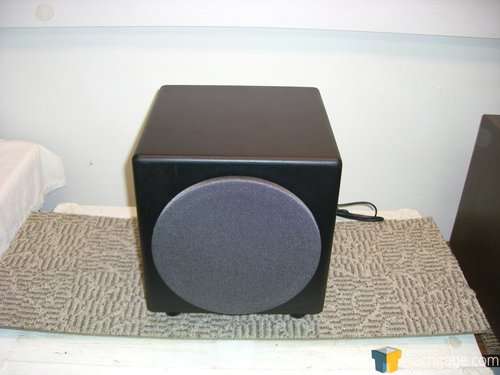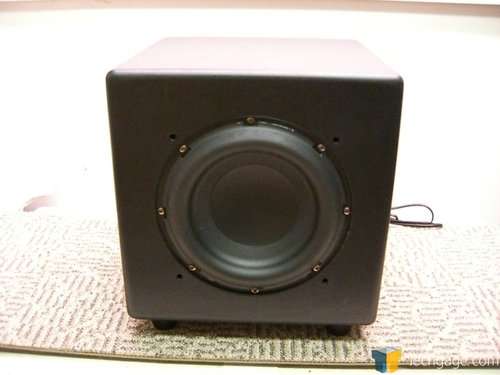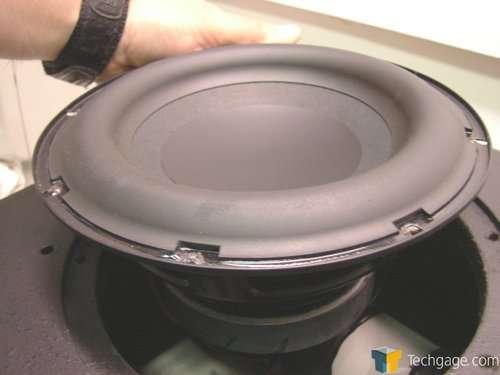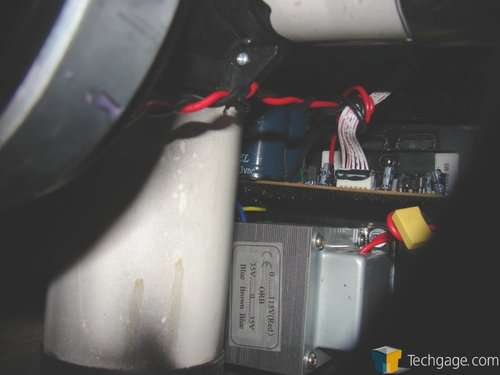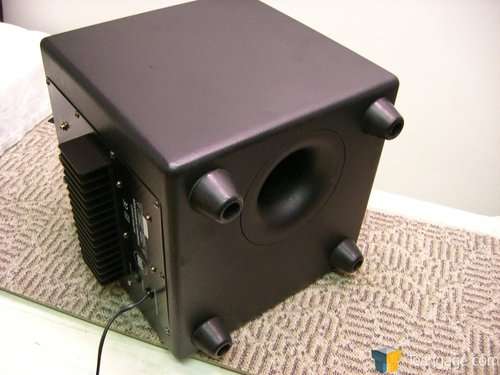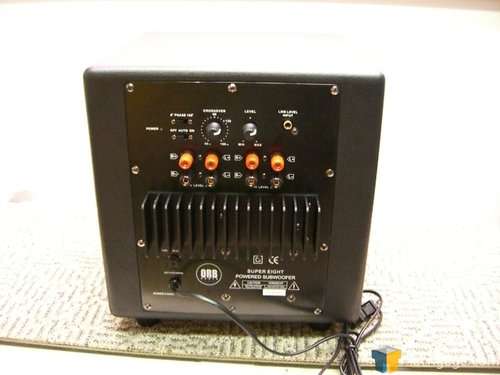- Qualcomm Launches Snapdragon 4 Gen 2 Mobile Platform
- AMD Launches Ryzen PRO 7000 Series Mobile & Desktop Platform
- Intel Launches Sleek Single-Slot Arc Pro A60 Workstation Graphics Card
- NVIDIA Announces Latest Ada Lovelace Additions: GeForce RTX 4060 Ti & RTX 4060
- Maxon Redshift With AMD Radeon GPU Rendering Support Now Available
ORB Audio Mod2 Home Theater System
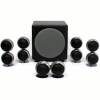
Here’s something that’s a bit different for Techgage – we have an in-depth look at a multichannel speaker package from ORB Audio, a new direct-selling speaker manufacturer that’s quickly gaining popularity. And for good reason, as we soon find out.
Page 4 – ORB Super Eight Features
One part of ORB’s speaker systems that they love to talk up is the ‘Super Eight’ subwoofer. With its built-in 150W amplifier (300W peak) and 8″ driver, they say, this 12″ cube can rival larger subwoofers. The Super Eight is also available by itself, so if you need to add a competent sub to some other non-ORB speakers, the Super Eight is an option.
(If this technical stuff is getting boring, just skip ahead to the next page to read about the listening tests. Or if you care to wait, I won’t spoil it for you.)
The theme of roundness continues with ORB Audio’s Super Eight sub. Despite its straight-edged shape, its driver is protected by a round open-weave grille. The enclosure is made of heavy and rigid medium-density fiberboard, coated in a textured finish that makes it more scratch-resistant. As with many things, weight is a sign of quality here. Or, more specifically, beefiness.
The grille is removable, and behind it is what we really came here to see – a hefty 8″ woofer, with a wide rubber surround and a thick paper-pulp cone. Even though this driver is only an 8-incher, its extended range of linear cone travel lets it displace as much air as a 10″ or 12″ woofer. ORB Audio specifies this subwoofer’s low frequency extension to a massively-low 25 Hz, so the Super Eight will need every last millimeter of linear throw to generate the kind of air movement that it takes to deliver clean bass at low frequencies.
The Super Eight’s woofer features a stamped steel frame, and a large-diameter spider (the fabric spring that provides restoring force for the driver). The magnet is ceramic, and the voice coil appears to be between 1″ and 1.5″, for high power handling. The rubber surround and stiff cone should be able to deal with whatever punishment you can feed this woofer.
The back of the woofer’s motor structure is “bumped” or extended, which gives the woofer’s voice coil more room to move. If you’ve ever heard the sickening ‘clack’ of a woofer bottoming out against the back of its motor structure, you know it can put a serious speed-bump in your enjoyment of the performance.
Serious subs move serious air, and the enclosure’s vent is an ample 2″-diameter tube, which is also flared at each end to decrease air turbulence that could otherwise pollute the clean bass with an annoying “chuffing” sound. To tune the tiny cube enclosure, a long port is required. (Conversely, tuning a larger box to the same frequency would employ a shorter duct.)
The Super Eight’s port tube makes two 90-degree bends, snaking its length around inside the enclosure. At the back of the box, the ‘guts’ of the amplifier is visible. However, a quick check around the rear confirms that the controls and input jacks themselves are sealed to the outside, so no air leakage occurs. In order to have effective driver loading (which supports the back of the driver to prevent excessive linear cone excursion), there can’t be any leaks in the box, so that’s why this is important.
Providing the juice for the Super Eight’s substantial woofer is a Class-AB amplifier rated at 150W RMS (into the 4-ohm woofer). ORB Audio claims a ‘Peak’ power of 300W for this unit, but ‘peak’ power ratings are virtually meaningless. The RMS power figure describes how much power this amp can deliver 24/7, day in and day out. The 300W figure is based on a much shorter time period – perhaps the duration of a kick drum’s transient. For serious rumbling or continuous high-level effects, however, the RMS power number is the one we really care about.
In addition to a control for the amplifier gain (‘volume’), there’s also a continuously-adjustable crossover frequency, and a switch that reverses the phase of the subwoofer’s input signal. Set this switch to the setting that gives the most overall level in your room, though the difference between settings is barely perceptible. The phase of the sub’s output only becomes an issue if your main speakers have a reversed phase (applying voltage to the + terminal makes the woofers move in instead of out), or if you’re placing the sub far away from the main speakers (to the tune of 20-30 feet). The subwoofer allows both line level and speaker level inputs, but you should use the line level inputs whenever you can.
The ORB Mod2 satellites and Super Eight subwoofer are each solid pieces of kit in their own right, but in combination, they should provide superb performance. All the makings of greatness are there — let’s see what the listening tests revealed.
|
|
Support our efforts! With ad revenue at an all-time low for written websites, we're relying more than ever on reader support to help us continue putting so much effort into this type of content. You can support us by becoming a Patron, or by using our Amazon shopping affiliate links listed through our articles. Thanks for your support!




